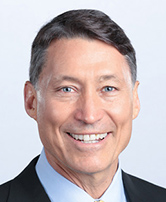

Leadership development efforts typically begin by honoring the ancient Greek exhortation to know thyself. Virtually all leadership development programs start with a self-assessment or personal reflection activity. However, these assessments can lead to a bias that places people in limiting boxes. The self may be far more fluid than has been assumed, and we may have paid too little attention to organizational culture as a powerful molding influence on leadership development.
Environmental factors powerfully shape personality. Carol Dweck’s best-selling book, “Mindset,” provides a compelling argument dispelling the idea that personality and IQ are unchanging. Dweck’s position has strong support from the late Walter Mischel, famous for the Stanford Kindergarten marshmallow experiment. Mischel declared that the idea of an immutable personality type is a myth. Further evidence comes from a 2014 study by Nathan Hudson and Chris Fraley published in The Journal of Research in Personality, which demonstrates that meaningful and lasting “personality” development is possible with a shift in mindset, deliberate practice and a strong culture of support.
The proposition that one’s personality is malleable rather than fixed is a seismic shift for learning and development professionals and offers a great deal of hope for those desiring to grow leadership capability. The best development professionals have become sensitive to the significant risk of stereotyping, bias and preoccupation with personality type. They focus instead on a meaningful commitment to a practical strategy for leadership development. Current research findings of unconscious bias and the malleability of personality are accelerating the move to a growth mindset approach.
But how can this growth mindset approach be facilitated? If we can accept the evidence that personality drives behavior and that personality is malleable, it is crucial for us to ask how leadership personality changes. The data demonstrate that lasting behavioral change requires a strong commitment to specific goals, supported by personal help and accountability from others, in a culture that both supports growth and models the desired leadership behavior.
Contemporary research indicates that personality differences, while undeniable, are more learned than innate. Distinctive differences represent habituated patterns more than inherent qualities and are a product of the powerful shaping forces of environment and organizational culture. Sherman Epstein found that situational variables and environmental factors create potent shifts in leadership behaviors.
Leaders live in a social context. Judgment and influence are their most essential capabilities. The most powerful force we have for shaping leaders of sound judgment and positive impact is the leadership culture in which they live and grow. While paying attention to personality type may help spotlight differences, we may miss the even more critical development force levered by culture. If organizational culture has a strategy for breakfast, it also drives the leadership development menu.



